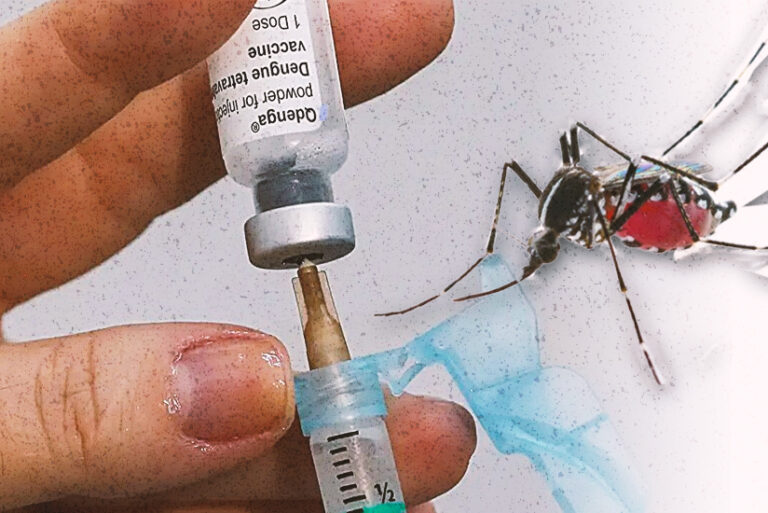Since the late 1980s, Ecstasy has been popular among show business personalities, young professionals, and even rich teenagers. In fact, the United Nations Office on Drugs and Crime (UNODC) estimates Ecstasy users to number approximately 9 million worldwide. The vast majority of users are teenagers and young adults.
Some of these users may end up addicted to the illicit drug. “I never thought that I would be addicted to Ecstasy,” 17-year-old Megan told veteran journalist Ellen Tordesillas. “I never thought I’d end up how I am today, on the verge of manic depression, a disease which changes the way you live forever. My parents never knew and they still don’t.
“I’ve lost so much weight and have major kidney problems. I was in the hospital for days… Drugs may take away the pain you feel inside, but they leave devastation in your body that will haunt you for life. I wish I would have known before I dove headfirst into a concrete pool.”
Ecstasy is one of the prohibited drugs in the Philippines along with methamphetamine (also known as shabu), marijuana (cannabis), cocaine (crack), heroin, (smack), and LSD (acid or hippie).
“All illegal drugs have immediate physical effects, and they also hinder psychological and emotional development, especially among young people,” says the United Nations Office on Drugs and Crime (UNODC).
A report from the Philippine Drug Enforcement Agency (PDEA) which said that the country “remains an attractive (illegal) drug market” in Asia and even described the Philippines as “a transshipment point for the region.”
This is the reason, said a CNN news report, why banned substances are easy to find in the country. “Street value of drugs in the country is among the cheapest in the region,” the report stated.
The street price of Ecstasy, for instance, ranges from P1,000 to P1,500 per tablet, the CNN said.
Ecstasy, known as “club drug” in the United States, is the choice of illicit drugs for teenagers and young professionals attending so-called “rave parties” or watching live concerts. Most research suggests that early (12-14 years old) to late (15-17 years old) adolescence is a critical risk period for the initiation of substance use.
Adolescence is the period when young people undergo physical and psychological development. “Adolescence is universally a time of vulnerability to different influences when adolescents initiate various behaviors, which may include substance use,” UNODC explains.
When mixed with alcohol, Ecstasy is extremely dangerous and can, in fact, be deadly.
It happened to Nikki, according to the Foundation for a Drug-Free World. When she left home that night, she was hoping to escape her problems and have a good time. She planned to party through the night with several friends. One of them had a bottle of liquid in his car, so they all decided to take some.
Soon, the drug started to take over. Nikki danced and danced and danced, pushing herself well beyond her usual limits. “Nikki wasn’t feeling anything,” one of her friends said in a police report.
The following morning, Nikki was dead. The cause: drugs (Ecstasy). The same thing happened to the 19-year-old woman who took Ecstasy during a concert on the eve of the Sinulog Festival in Cebu City.
In the United States, the Drug Enforcement Administration classifies Ecstasy as a Schedule I drug, a description reserved for dangerous substances with no recognized medical use. Other Schedule I drugs include heroin and LSD.
Ecstasy goes by other names: E, Snackies, New Yorkers, XTC, X, Adam, Roll, 007, and Molly. “The drug, usually made in illegal laboratories, consists of a range of substances that make it dangerous to consume,” said a primer from UNODC. “It comes in the form of tablet, powder or capsule and is usually swallowed, but could also be snorted or injected.”
It is a synthetic drug – known as 3,4-methylenedioxy-methamphetamne (MDMA) – that alters mood and perception (awareness of surrounding objects and conditions). “Ecstasy is chemically similar to both stimulants and hallucinogens, producing feelings of increased energy, pleasure, emotional warmth, and distorted sensory and time perception,” explains the US National Institute on Drug Abuse (NIDA).
Users think the drug will make them feel good and keep them going for days without rest. But people who use Ecstasy are courting trouble. “Ecstasy has sent many people to emergency rooms because of its dangerous side effects,” kidshealth.org states.
Initially, Ecstasy was popular in the nightclub scene and at all-night dance parties. The popular nickname Molly (slang for “molecular”) often refers to the supposedly “pure” crystalline powder form of MDMA usually sold in capsules.
“However, people who purchase powder or capsules sold as Molly often actually get other drugs such as synthetic cathinones (“bath salts”) instead,” NIDA says. Some people take MDMA in combination with other drugs such as alcohol or marijuana.
A German pharmaceutical company patented MDMA in 1914. “Its use remained dormant until the 1970s, when a few psychotherapists prescribed it for their patients, believing that it enhanced communication during therapy sessions,” wrote Richard Maffeo in an Insight feature. “However, scientific evidence soon convinced the medical community that the drug caused serious side effects.”
Today, Ecstasy is made in illegal laboratories, which means the person taking it has no idea if the dose will be strong or weak, or even if it will contain any MDMA at all. In some instances, it may contain other chemicals or “fillers” (such as household products) which may have unexpected or dangerous side effects.
Once swallowed, Ecstasy is absorbed into the bloodstream and travels to the brain. The popularity of Ecstasy is due to the increase of activity of three brain chemicals: dopamine, norepinephrine, and serotonin.
Dopamine, NIDA says, produces increased energy/activity and acts in the reward system to reinforce behaviors. Norepinephrine, on the other hand, increases heart rate and blood pressure, which are particularly risky for people with heart and blood vessel problems.
As for serotonin, it affects mood, appetite, sleep, and other functions. “It also triggers hormones that affect sexual arousal and trust,” NIDA says. “The release of large amounts of serotonin likely causes the emotional closeness, elevated mood, and empathy felt by those who use MDMA.”
Other health effects of ecstasy include nausea, muscle cramping, involuntary teeth clenching, blurred vision, chills and sweating.
The effects of Ecstasy are usually felt about 20 minutes to an hour after it is taken and last for around 3-4 hours, betterhealth.vic.gov.au reports. The comedown (or return to normal as the drug leaves the body) may last one to two days or up to a week.
As a nervous system stimulant, Ecstasy works by prompting the brain to initiate the ‘fight or flight’ response and the user feels refreshed by a burst of energy. “Ecstasy can distort your experience of reality by influencing perceptions of sight and sound,” states betterhealth.vic.gov.au.
Ecstasy, however, clouds a user’s judgment, making him/her take more risks, for instance having unsafe sex that could lead a person to contact sexually transmitted diseases, including human immunodeficiency virus and acquired immune deficiency syndrome (HIV/AIDS).
People with certain conditions – such as epilepsy, high blood pressure, heart disease, diabetes, kidney disease or mood or psychiatric disorders – are at greater risk of harm if they take Ecstasy.
As stated earlier, the effects begin around 20 minutes. They may include euphoria and feeling energetic and confident, accelerated heart rate and breathing, rise in blood pressure, sweating and dehydration, nausea, jaw clenching and teeth grinding, tingling skin and muscle aches and pains, dilated pupils, loss of appetite, heightened senses, sleep problems, feeling affectionate and an increased sex drive (libido), loss of inhibitions, and excessive thirst (drinking large amount of water, which can result in death).
In addition to the above, people who take Ecstasy in large or strong doses may experience further effects such as: changes in perception (such as hallucinations), irrational behaviors that seem out of character (aggression, paranoia), anxiety and irritability, and vomiting.
What comes up must go down, so goes a popular saying. So, after experiencing a “high,” coming down from Ecstasy can be an unpleasant experience. Symptoms may last a few days and include: sleep problems and fatigue, aching muscles, anxiety, agitation, depression, and trouble concentrating. The person may also have decreased interest in and pleasure from sex.
In some instances, Ecstasy use can lead to serious harm or even death. Among those identified are the following: cardiac arrest, stroke, kidney failure, overheating (hyperthermia) and dehydration, and dilutional hyponatremia (when the user “drowns” their brain by drinking too much water).
Until now, research results vary on whether ecstasy is addictive. But “many users say that it is hard to stop taking the drug and may indicate that it is possible to become psychologically dependent,” betterhealth.vic.gov.au states.
Right now, there are no specific medical treatments for ecstasy addiction. “Some people seeking treatment for MDMA addiction have found behavioral therapy to be helpful,” NIDA says. “Scientists need more research to determine how effective this treatment option is for addiction to MDMA.”
Ecstasy is one of the prohibited drugs listed under the Comprehensive Dangerous Drugs Act of 2002. Under this law, anyone guilty with importation or sale of dangerous drugs, with the manufacture of illegal drugs, can be punished with life imprisonment to death and a fine.
In addition, the penalty for possession of illegal drugs depends on the quantity of the drugs (regardless of quality) and the type of drug.








